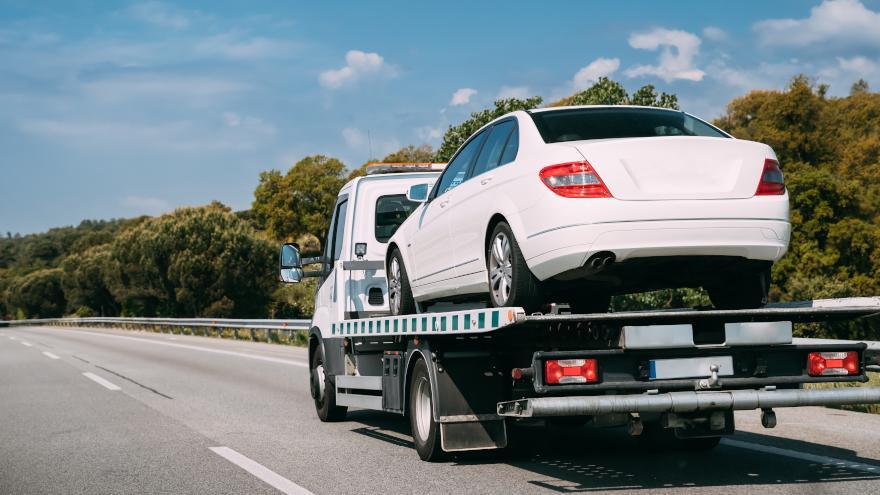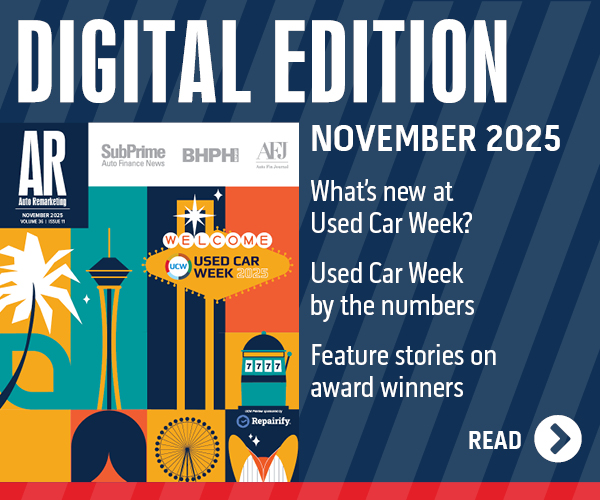Executives share insight on current auto transport trends

The entire auto industry has been impacted by recent trends in the current business environment, including COVID impacts and labor shortages, supply chain hiccups and more. And perhaps no branch of the industry has been affected as much as the vehicle transport and logistics side of the business. COVID restrictions, a shortage in drivers and new- and used-supply tightening has rocked the industry over the past couple of years.
That said, the transportation and logistics space is no stranger to change and innovation, and many companies have adapted to these changes — and even excelled in this seemingly difficult environment.
Also, offsetting these challenges is the constant innovation and leaps in technology, making logistics and vehicle delivery easier and more streamlined for all involved.
Auto Remarketing picked the brains of top executives at leading transport and logistics companies, such as ACERTUS, ATI Transport, Montway and Autosled, among others, to get a full picture and varied perspectives on the 2022 auto transportation industry.
COVID impact & labor shortage
Jay Wertzberger, head of ATI — a car shipping business channel on YouTube — aims daily to shed light on the challenges and opportunities available in the transportation industry.
When asked whether the COVID 19 pandemic had a large impact on the industry, he told Auto Remarketing, the transportation business was stressed long before COVID came along, and 2021 just finished off many businesses that were already struggling.
“Trucking is so expensive and burns through cash so quickly, waiting for a check to arrive in the mail still doesn’t cover the cost of needing to haul loads right now,” Wertzberger said.
Mike Trudeau, executive vice president of business development at Montway Auto Transport, said that when the lockdown happened the first time, business actually “shot up,” because a lot of people were moving cars to different parts of the country.
“As the lockdown continued, capacity started to drop, but so did the carrier base. Now it’s come full circle — at the start of this year, capacity and volume were extremely high,” said Trudeau. “Today it’s kind of leveling out where fuel prices have increased, but the supply is down, so there’s capacity right now.”
For the transportation industry, it’s always challenging when capacity fluctuates, but it’s not unusual for the business. Capacity usually comes in waves, but it was out of its usual cycle early on in the pandemic.
Dave Sperau, co-founder and chief revenue officer of Autosled, said that COVID has had “an enormous impact on logistics processes across all industries.”
Autosled is fairly new to the industry, launching in 2019, “so we’ve had to grow and adapt alongside the changing transportation landscape pretty much since the beginning of the business,” he said.
ACERTUS chief executive officer Trent Broberg said that the COVID-19 pandemic affected many industries, but the automotive and mobility industries “are among the hardest hit.” Many car dealerships closed, and car buying ground to a halt.
Interestingly, Jeremy Louisos, senior vice president of Pre-owned Auto Logistics, said that the COVID pandemic served to spur along online and digital retail spaces.
“We anticipated the eventual rise of the online retail/trade platform, but the timing was pushed up,” said Louisos. “We’ve seen a huge boom in this space, and we’ve scaled up to accommodate.”
Supply chain and labor shortage struggles
Most everyone in the automotive industry has had to weather tight inventory for new and used vehicles, as well as a labor shortage across the industry. This is especially true for the transportation industry.
Wertzberger attributes the driver shortage issue to a driver retention problem, which he says is likely not to go away any time soon.
“Everybody needs good drivers, and drivers are looking for money and respect,” said Wertzberger.
Another concern is the average age of drivers — as the ATI host said most sit in their 40s, “and there aren’t as many younger guys getting in to replace them.”
Broberg reinforced that the biggest challenges the transportation industry is facing is having carriers and drivers to keep up with demand. The long-standing truck driver shortage and an aging trucker population certainly doesn’t help.
And the carrier challenge started way before COVID.
“Unfortunately, this has not improved, and has become even more difficult. As for staffing, we had to open up to new types of candidates, searching outside for our industry for folks with complementary skill sets,” said Louisos.
Trudeau said to get around truck driver shortages, Montway has built a carrier relations team to onboard new carriers and “get a better understanding of what carriers need and what would entice them to haul for Montway.”
Expanding its carrier network is how Montway is able to offset the driver shortage and still have the capacity the company has today.
Autosled works a bit differently than most transport companies. Sperau explained that the company has a network of thousands of independent, verified and insured transport companies that provide dispatchable capacity for vehicle shipments.
Auto supply shortages have been another dark cloud circling the auto industry. Supply chain issues limit new-car production and parts for equipment.
For example, the semiconductor shortages forces thousands of new cars to sit and wait to be finished — rather than sending them on to be transported to their selling locations.
According to Trudeau, the biggest impact the auto supply chain has had on the transportation industry is the “inconsistency of volume.”
Additional challenges in the industry?
● Record-high cost of diesel fuel in the U.S.
● Visibility, or locating cars as consumers buy more and more vehicles in different locations
● Continued disruption in the global supply chain
● Lagging new-vehicle production forcing OEMs to significantly reduce their use of rail for vehicle transport.
● A strong need to elevate the relationship between carriers and shippers
● Rise in electric vehicle production, adoption and ownership and a growing number of EV transports
“An EV weighs much more than a similarly sized fuel-based vehicle due the weight of its battery. Federal law mandates that carriers cannot haul more than 82,000 pounds of gross vehicle weight with any single transport, so transporting EVs means they often have to reduce the number of vehicles they haul during each load,” Broberg said.
Opportunities
There may be challenges that the auto transportation industry is facing on a regular basis, but they are opportunities presenting themselves, as well.
Autosled, although a relatively new company, “is adding dealers and transporters to our network every day, and exploring ways to strengthen it,” said Sperau.
The Autosled team is currently working on its proprietary route optimization algorithm, in an effort to greatly increase carrier capacity and efficiency.
Over at Montway, Trudeau sees opportunities as being great — especially in the rental industry.
“The car rental industry in terms of the used-car space has been really fragmented pretty much since its existence,” he said. “Larger third-party logistics companies can come in and really manage the transportation — for dealerships, large consignors, financial institutions — and give them the visibility they need to be able to move their cars and improve their cycle time”
In other words, transportation companies really have the opportunity to improve the overall cycle time or the life cycle of the car.
Louisos said his company has been focused on implementing quickpay/ACH systems, as well as API integrations.
Over at ACERTUS, what Broberg calls a “fun challenge,” is presented in the form of digital retailing and home delivery.
“Digital retailing has revolutionized car sales and service, providing consumers unparalleled access to inventory, online transactions and the expectation for faster fulfillment,” said Broberg. “Dealers are now left with the challenge of how to move more product faster and upshift the customer experience.”
Many transportation companies are utilizing data and analytics to improve business performance and serve their customers better.
Subscribe to receive our daily e-newsletter and never miss the latest industry news, trends, and insights across the used-car and remarketing space.


